Overcoming Codependency: Am I Enabling or Codependent?

Overcoming codependency starts with knowing the symptoms and signs that cause its behavior. Identifying traits of codependency can be challenging if the relationship dynamic involves a person struggling with substance abuse. Consequently, family members have difficulty understanding if they are helping or if they’re enabling their loved one’s drug addiction. First, let’s take a look at the two behaviors which define codependency and enabling, making sure we aren’t quick to label ourselves or loved ones. If you believe you might be codependent and enabling a substance abuser, this information will help begin the journey to overcome codependency.
What is Codependency?
Codependency refers to the dysfunctional behavior associated with helping or supporting another person substance abuse dependence, poor mental health, or maladaptive lifestyle. Codependent people who themselves are not addicted to drugs and alcohol are considered enablers.
What is Enabling?
Enabling presents itself when the addicted individual’s family or friends support his or her addiction to alcohol and drugs. Through thoughts and actions those who enable serve as a defense of substance abuse dependent individuals; resulting in the addict’s inability or lack of need to recognize the consequences of their addiction.
The Codependent Enabler
Enabling behaviors, often, result from codependent behavior in a relationship dynamic where addiction is present in one person. The individual’s entire sense of self is dependent on the other. Enabling crosses the line of “support” and allows the addict to continue and escape necessary consequences of their behavior. Keeping the substance abuser dependent isnt what the enabling person wants to do. However, for the codependent enabler to continue to feed their own need, there must be someone to help or support.
Children of Alcoholics: Codependent children of alcoholics and addicts are primarily attracted to substance abusers. When a parent suffers from addiction, its probably the child grows up despising alcohol and drugs. Notably, as an adult, it is common that they are in a relationship dynamic with an addicted person. Their motive for seeking out people with addictions is to help and fix them, instead make up for the alcoholic parent they couldn’t help or fix.
Parents of the Addict: who their son or daughter is addicted can easly fall into patterns of codepency and enabling. Instead of letting that child experience consequence and take responsibility, they enable, hence the codependent relationship forms. Many families believe that they are protecting their child. Unfortunately, this comes at the cost of their freedom and sanity.
Enabling or Support: Enabling crosses the line of “support” and allows the substance abuser to remain addicted. Keeping a loved one addicted isn’t the codependent enablers desire. Consequently, to feed their codependent needs, there must be someone to enable and the result when we enable, we become codependent. In conclusion, to avoid having to overcome codependency and enable a loved one’s drug addiction you must set boundaries around the addicts’ art of manipulative behaviors.
Six Signs of Codependent Enabling
1. Patterns of Low Self Esteem
The codependent enablers self-esteem primarily on the behavior of the unhealthy friend or family member. Gaining a false sense of self-worth, self-importance, and power by solving the addict or alcoholics problems drives the behavior of the codependent loved one.
2. Control and Manage
With control, the codependent believes they know what is best for the addict or alcoholic. Continually managing how the addicted person should behave. They exhibit and use tactics such as guilt, manipulation, coercion, and advice giving to ensure they’re in control of the person and their addiction.
3. Embracing Responsibility
The codependent enables by cleaning up various messes for the addict such as financial responsibilities, legal problems, and emotional chaos. As a result, it interrupts the natural consequences initiated by the addicts’ negative actions and behaviors. Parents and loved ones, as a result, will most likely never overcome codependence when constantly in tune with addicts responsibility and not their responsibility to get well themselves.
4. Denial
Ignoring or pretending the addicted individual doesnt have a problem. The codependent enabler will purposely believe the addict’s fabrications by frequently lying to themselves; staying convinced tomorrow will be different.
5. Protecting Image or Social Position
Offering too much protection for the addict and alcoholic is a typical behavior characteristic most frequently talked about when journeying towards overcoming codependency. The stigma of addiction results in protection of social position or one’s image, creating a co-dependent enabling environment. The codependent enabler shelters the drug addict providing a false sense of comfort to the enabler. As a result, they do not have to experience the loss of control that natural consequences might create.
6. Repression and Dependency
The codependent’s mood defined by the mood of the dependent individual and the dysfunctional atmosphere created by the drug addiction. Putting aside their interest and quality of life while illustrating signs of being addicted to a person dependent on drugs and alcohol.
Codependents lose their sense of self and cannot differentiate where they stop and the other starts. Their role becomes controlling and managing the addict, while the addict’s purpose is to regulate and maintain their addiction. These tactics do not work but will endure for years or a lifetime. The enabler often has the best intentions. They want to care for their loved one. Unfortunately, enablers are unaware of the harm they’re creating. The perpetuation of addiction and a life without ever overcoming codependency is a consequence of enabling which will stop at nothing.
Overcoming Codependency by Setting Boundaries
The substance abuser considers their need for a substance as severe as their need for air or oxygen. The result of this intense demand for addictive substances creates a lying manipulation machine that runs over anything and anyone to get their next fix. Most notably Addiction needs support, and it will find the person who will support it. Overcoming codependency the rely on the ability to set boundaries. First, we have to understand what behaviors and actions not to support or defend. Parents and loved ones are tempted to believe the lies and manipulation the addict and alcoholic have to offer. Know the signs of addictive behavior and overcome codependency. Here are some of the substance abuser’s common manipulations.
Common Ways Addicts Manipulate
- The addict’s various need for more money.
- Excuses for being jobless.
- The insistence on leaving treatment centers or aftercare programs early.
- Lies as to why not show up for a family function or significant event.
- Covering up the primary issue of addiction, with things like physical health, mental health, etc.
- Schemes to get their way.
- Buying the subtle or aggressive manipulation, the addict uses to place guilt on the parents for their using.
- The financial assistance to prevent the addict from “needing to steal.”
- Empty promises the alcoholic offers that things are getting better “any day now.”
- The claim that they are taking action around self-improvement: “if they can just get a little more money, a little more time, a car, a fill in the blank.”
Begin Your Journey to Overcome Codependency
There is a powerful resistance towards admitting and ultimately surrendering to codependency and enabling. Similar to the opposition the addict feels towards quitting the disease of addiction, so too does the codependent enabler. There are specific steps and many resources that treat and offer large support to reach your goal in overcoming codependency.
Co-Dependents Anonymous CoDA is an excellent resource for those with the desire to overcome codependency. CoDA is a free public twelve-step program similar to the 12 step program of Alcoholics Anonymous. CoDA has grown to offer over thousand meetings in the United States. Internationally Coda is active in 60 other countries in addition to offering meetings online.




